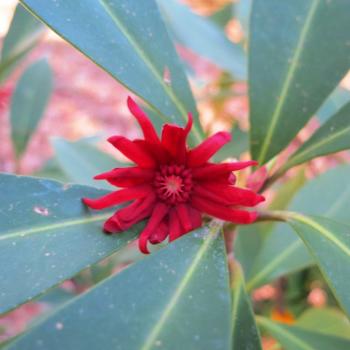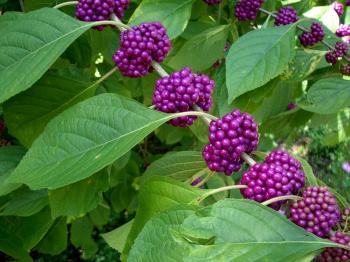Arkansas Native Plants
Arkansans have always been conscientious about the environment, but today, sustainable gardening or "going green" seems to be of the utmost importance. When choosing plants for the landscape, many gardeners are looking for reliable performers which are showy, yet need minimal care. Easy care plants should not be invasive. One group of plants that seems to fit almost all of those criteria is native plants.

How Do We Recognize Native Arkansas Plants?
To fit our criteria of low maintenance, able to adapt to Arkansas growing conditions and non-invasive, gardeners should look a bit closer to home when choosing natives.
Plants that have been surviving on their own along roadsides and in wooded areas in
the south, should be well adapted to growing in our home landscapes. Native plants
(also called indigenous plants) are plants that have evolved and adapted to local conditions over thousands of years. They have adapted to the geography—including rocky soil or heavy clay, and climate
of that region—whether hot and dry, or hot and humid. Most regional natives are vigorous
and hardy, so can survive summer heat, winter cold, dry conditions or wet ones without
additional care.
When choosing native plants for your own yard, match the conditions you have—sun or
shade, wet or dry.
Each native plant species is a member of a community that includes other plants, animals and microorganisms. The natural balance in that community keeps each species in check, allowing the native plant to thrive in conditions where it is suited, but preventing it from taking over the garden. Thus, native species rarely become invasive, as plants introduced from other areas can be–(consider privet, kudzu, bamboo and vinca—all introduced and all highly invasive). A community of native plants provides habitat for a variety of native wildlife species such as birds and butterflies. Once established, they require little to no irrigation or fertilization, however they may flourish with a little extra care in your garden. Native plants are resistant to most pests and diseases—there is no one to spray or monitor for pests in the wild, yet they still survive. Native plants suit today's interest in "low‑maintenance" gardening and landscaping.
Misconceptions About Native Plants
Often a misconception about native plants is that they are weedy and only used in a meadow or natural setting. Many great native perennials and shrubs are mainstays in gardens, including:
Arkansas Native Shrubs:
- Yaupon holly
- Beautyberry – Callicarpa
- Calycanthus (Sweet Shrub or Carolina allspice),
- Illicium (Florida Anise)
- Native azaleas and Clethra (Summersweet).
Of course many recognize the native trees, including oaks, hickories, pines and cedars, but think of the more ornamental species: Dogwoods, redbuds and magnolias.

How native is your native will always be debated among plant folks, however, most gardeners are interested in what works. Giving gardeners success without heavy maintenance schedules is important. Choosing plants that not only thrive, but don't spread prolifically is also important.
Whether the plant is the native species or an improved cultivar of that native—a "nativar" , really doesn't matter. What does is that we match the conditions in our yards with the conditions a plant needs to grow. So if you are looking for reliability and low maintenance, look no further than native plants; you have many options to choose from.
Read about honeybee-friendly plants